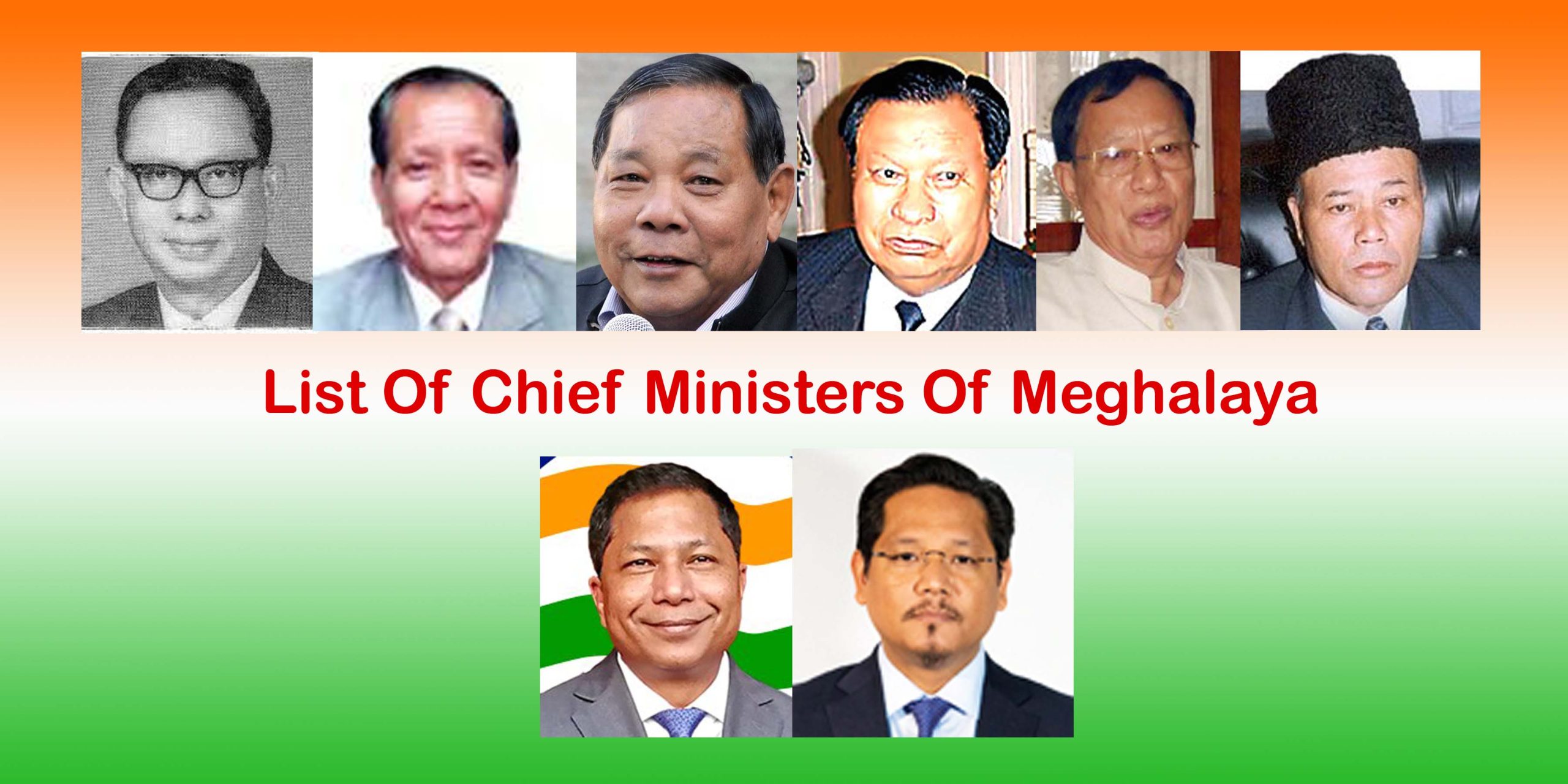
A Journey of Chief Ministers of Meghalaya Since Independence
Tucked in India’s northeast, Meghalaya, famously called the “abode of clouds,” has enjoyed outstanding leadership since it became its state on January 21, 1972. The Chief Ministers of Meghalaya Since Independence have been critical players in shaping Meghalaya’s future, navigating tough times, and setting the stage for its growth and well-being. This blog takes a closer look at what Meghalaya’s Chief Ministers have done, the hurdles they’ve faced, and how their time in office has left a lasting mark on the state.
In this blog, Chief Ministers Of Meghalaya Since Independence, we will look at these leaders, discussing the big projects they worked on, their challenges, and how they’ve left a mark on the state. Let’s dive into the stories of these incredible leaders and explore how they’ve shaped Meghalaya into the place it is today.
A Journey Through Leadership: Meghalaya Chief Ministers Since 1970
Williamson A. Sangma (1970-1972, 1972-1976, 1976-1978, 1981-1983, 1983-1988)
In A Journey of Chief Ministers of Meghalaya Since Independence, Williamson A. Sangma played a crucial role in Meghalaya’s history, leading as Chief Minister several times since the state’s formation in 1972. Known as one of Meghalaya’s founders, he shaped the state’s identity and established its government structure. Throughout his time in office, he worked hard to protect the cultural traditions and meet the needs of the local tribal communities.
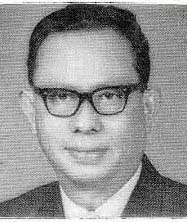
Key Contributions:
- Creating Meghalaya: Williamson A. Sangma led the charge to carve out Meghalaya, aiming to meet better the administrative and cultural needs of the hill tribes.
- Setting Up the Government: He guided the setup of Meghalaya’s government infrastructure, ensuring the new state had a strong foundation and a smooth start.
- Boosting Education and Healthcare: In addition, he prioritized upgrading schools and healthcare services, knowing these are crucial for improving life in Meghalaya and driving the state’s progress.
- Protecting Tribal Interests: Sangma also stood up for tribal rights and worked to keep the unique cultural heritage of Meghalaya’s tribes alive, highlighting their vital role in the state’s character.
Challenges:
- Keeping Peace Among Diversity: Williamson A. Sangma tackled ethnic tensions and political upheavals, working hard to maintain peace and unity among Meghalaya’s varied communities.
- Growing the Economy Responsibly: He took on the challenge of boosting the Economy without harming Meghalaya’s unique environment or cultural values, a tricky balance given the state’s distinctive surroundings and society.
- Building in the Hills: Sangma addressed the tricky task of developing infrastructure in Meghalaya’s hilly landscape, overcoming obstacles to improve roads and access, which are vital for the state’s development.
Legacy: Williamson A. Sangma’s legacy is a cornerstone of Meghalaya’s foundation and growth. His forward-thinking leadership and commitment to the well-being of local communities have made a lasting impact on the state’s path forward. People remember him as a leader who laid the groundwork for Meghalaya’s development, ensuring that the state’s management and growth closely matched the desires and needs of its residents.
Darwin Diengdoh Pugh (1978-1979)
Darwin Diengdoh Pugh was the Chief Minister of Meghalaya, a northeastern state in India, for a short while. In A Journey of Chief Ministers of Meghalaya Since Independence, he led the state during its early days, tackling the challenges of being newly formed. Pugh worked hard to guide Meghalaya through political uncertainty and social change, focusing on building more robust governance and encouraging development.
Key Contributions:
- Boosting Political Stability: He aimed to stabilize Meghalaya’s political scene during a period marked by anticipated changes in leadership. He sought to create a stable setting that would support governance and development.
- Making Government More Efficient: He also advocated for administrative reforms to streamline government operations, ensuring smoother processes and enhanced delivery of public services.
- Improving Infrastructure: Even with his brief time in office, Pugh worked on improving infrastructure, especially in building roads and enhancing public utilities, setting the stage for States’s future growth.
- Supporting Social Welfare: Additionally, he championed social welfare programs to help the less fortunate, recognizing that social fairness is critical to Meghalaya’s development.
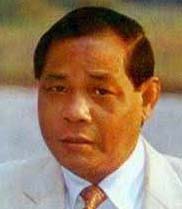
Challenges:
- Limited Time in Office: Darwin Diengdoh Pugh’s short term as Chief Minister made it challenging to implement and see his plans’ impact fully.
- Dealing with Political Instability: Leading Meghalaya during frequent leadership changes and political uncertainty was a significant challenge, making it hard to keep development on track.
- Boosting the Economy: He had the tough job of growing the Economy in a state with few resources and a mainly rural economic setup, which meant he had to devise creative ways to kickstart development.
Legacy: Even though Darwin Diengdoh Pugh’s time as Chief Minister was short, people remember him for his strong commitment to improving governance and development at a critical moment in Meghalaya’s history. His work to stabilize the state and focus on making the government more efficient laid the groundwork for future leaders to build on. Despite his short tenure and the unstable political environment, Pugh’s early actions were vital in fostering Meghalaya’s growth and development after its formation.
B. B. Lyngdoh (1979-1981, 1983, 1990-1991, 1998-2000)
In A Journey of Chief Ministers of Meghalaya Since Independence, B. B. Lyngdoh was a key political leader in Meghalaya, holding the Chief Minister’s position during multiple terms. He led the state through critical times of political and socioeconomic shifts. Lyngdoh’s leadership style emphasized democratic principles, development from the ground up, and a strong sense of regional identity.
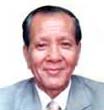
Key Contributions:
- Boosting Democracy: B.B. Lyngdoh strengthened Meghalaya’s democratic framework, highlighting the importance of everyone’s participation in governance and sticking to the rule of law for the state’s future.
- Fostering Social Harmony: He dedicated himself to building peace among State’s’s various ethnic groups, knowing well the importance of balance in a diverse society.
- Driving Economic Growth: Lyngdoh also introduced policies to boost the local Economy, focusing on using the state’s natural resources wisely without harming the environment.
- Improving Infrastructure and Rural Areas: He made it a priority to build better infrastructure, especially in rural regions, to enhance transportation, healthcare, and education, aiming to bridge the gap between city and countryside living.
Challenges:
- Dealing with Unstable Politics: B.B. Lyngdoh managed through times of political ups and downs and coalition governments, facing significant hurdles in governing and implementing policies.
- Calming Ethnic Tensions: He tackled ethnic disagreements and fights, working hard to keep peace and unity in a state rich with diverse cultures.
- Balancing Economy and Environment: Lyngdoh took on the tough job of boosting the Economy with limited resources while looking out for the environment and finding a middle ground between growth and preservation.
Legacy: B.B. Lyngdoh is a forward-thinking leader who significantly influenced Meghalaya’s politics and society. He actively promoted democracy, fostered peace among diverse groups, and championed eco-friendly growth, leaving a lasting mark on the state. His tenure demonstrates his dedication to enhancing the lives of Meghalaya’s people, driving the state towards tangible progress and inclusivity.
P. A. Sangma (1988-1990)
P. A. Sangma was the Chief Minister of Meghalaya, known for his dynamic leadership and clear vision for the state’s growth. His time in office was marked by a lot of political action, focusing on meeting Meghalaya’s immediate needs and planning for its future. The Chief Ministers of Meghalaya Since Independence, Sangma’s energetic way of leading and commitment to guiding Meghalaya towards better economic and social achievements stand out.
Key Contributions:
- Boosting Political Stability: P.A. Sangma made Meghalaya’s political scene more stable and vital for the state’s growth. His leadership united Meghalaya’s diverse communities with a shared goal and sense of unity.
- Driving Economic Growth: He kicked off various projects to boost Meghalaya’s Economy, focusing on agriculture, tourism, and mining, and worked to draw in more investments in the state.
- Upgrading Infrastructure: Sangma also concentrated on building better roads, bridges, and public buildings to make travel and transport more accessible, which helped the Economy grow. He also worked on improving the water supply and sanitation.
- Enhancing Education and Healthcare: He emphasized bettering the education and healthcare sectors, knowing how vital they are for the state’s and its people’s development.
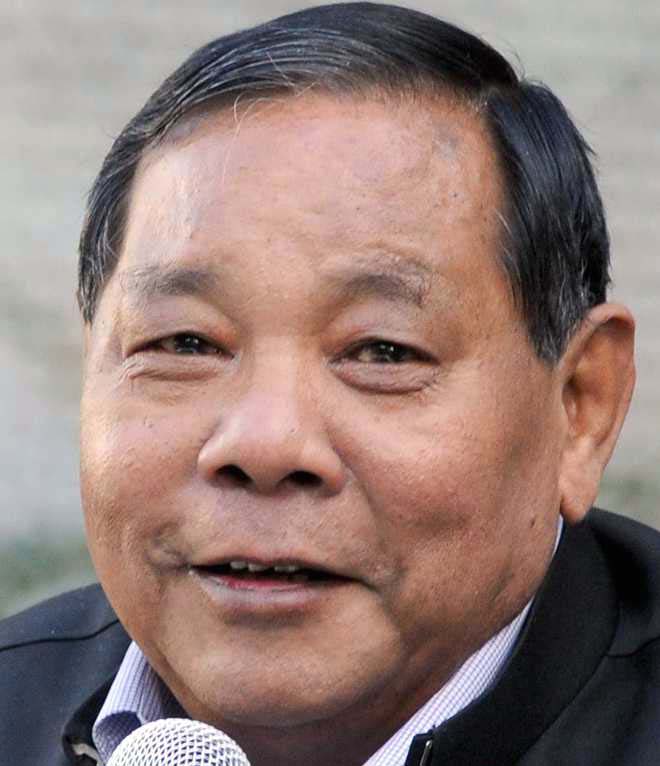
Challenges:
- Handling Ethnic Diversity: A significant challenge for P.A. Sangma was to address the hopes and complaints of Meghalaya’s various ethnic communities, making sure that development benefited everyone somewhat.
- Economic Growth vs. Environmental Care: He had to find a way to boost the Economy without harming Meghalaya’s beautiful natural surroundings, especially when mining and managing natural resources.
- Dealing with Political Challenges: Sangma faced tough political opposition and disagreements, making it hard to implement policies and govern effectively.
Legacy: People remember P.A. Sangma’s time as Chief Minister for his significant improvements to Meghalaya’s politics and growth path. Leading during a crucial period, he laid the foundation for future progress. He showed how to tackle the formidable challenges of leading a diverse and evolving society. His work to boost the Economy, enhance infrastructure, and improve education and healthcare has left a lasting mark on the state. Sangma’s legacy is of forward-thinking leadership and a deep commitment to enhancing Meghalaya.
D. D. Lapang (1992-1993, 2003-2006, 2007-2008, 2008, 2009-2010)
In A Journey of Chief Ministers of Meghalaya Since Independence, D.D. Lapang’s long and impactful political career in Meghalaya stands out. He served as Chief Minister several times, leading with a focus on tackling the state’s development challenges amidst complex coalition politics. His time in office concentrated on improving governance, boosting social welfare, and driving economic growth, all while dealing with Meghalaya’s varied social and political scene.
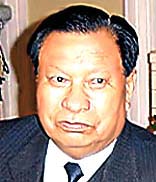
Key Contributions:
- Improving Governance: Lapang worked to make Meghalaya’s governance stronger, with a focus on making it more transparent, accountable, and efficient. He kickstarted reforms to make government operations and services more effective.
- Building Infrastructure: He prioritized building better roads, healthcare facilities, and schools to drive economic growth and enhance life in Meghalaya.
- Launching Social Welfare Programs: Lapang also rolled out various programs to help those in need, with particular attention to healthcare, education, and empowering women.
- Boosting Tourism and Agriculture: Seeing the potential in tourism and agriculture to fuel Meghalaya’s Economy, he pushed for policies promoting these areas, aiming to create jobs and increase the state’s income.
Challenges:
- Dealing with Ethnic Tensions: During Lapang’s time as Chief Minister, a big challenge was managing the ethnic tensions and keeping peace among Meghalaya’s diverse communities.
- Diversifying the Economy: He also tackled the challenge of broadening Meghalaya’s Economy beyond its traditional reliance on agriculture and mining, aiming for sustainable and eco-friendly methods.
- Overcoming Political Challenges: Lapang’s leadership faced hurdles due to political instability and the complexities of coalition politics, which sometimes made it hard to carry out long-term plans and projects.
Legacy: D.D. Lapang’s tenure as Chief Minister stands out for its significant achievements and formidable challenges. He dedicated himself to enhancing governance, developing infrastructure, and promoting social welfare, contributing significantly to Meghalaya’s growth. Facing political and social hurdles, Lapang steered Meghalaya through transformative periods, laying a solid foundation for its continued development. People celebrate him for his unwavering commitment to bettering the lives of the state’s residents, constantly striving to improve Meghalaya with his leadership and policies.
S. C. Marak (1993-1998, 1998)
In A Journey of Chief Ministers of Meghalaya Since Independence, S. C. Marak led the state through times of political shifts and social changes. During his leadership, he focused on fostering peace, development, and social welfare in Meghalaya, a state known for its diverse ethnic groups and wealth of natural resources. Marak played a crucial role in tackling different challenges while working hard to keep the state stable and growing.
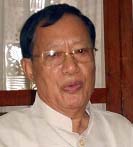
Key Contributions:
- Improving Governance and Stability: S.C. Marak focused on strengthening the governance system to maintain political stability and efficient management, which is especially important during frequent political changes.
- Upgrading Infrastructure: He put in efforts to better the state’s infrastructure, like roads, schools, and hospitals, aiming to improve people’s lives and support economic growth.
- Starting Social Welfare Programs: Marak introduced several social welfare programs to help those in need, including health care, education, and support for women and children.
- Ensuring Peace and Security: He concentrated on keeping the state peaceful and safe, worked on easing ethnic tensions, and helped different communities in Meghalaya live together in harmony.
Challenges:
- Handling Ethnic Tensions: During Marak’s time, a big challenge was dealing with ethnic tensions and conflicts. He had to carefully manage these issues to maintain peace and unite Meghalaya’s diverse communities.
- Boosting the Economy: Trying to grow the Economy in a state with little industrialization and heavy reliance on farming and mining took a lot of work. Marak needed creative solutions to spark economic growth.
- Protecting the Environment: Finding a balance between development and preserving the environment posed a significant challenge, considering Meghalaya’s vast biodiversity and the need to protect its natural treasures.
Legacy: S.C. Marak’s tenure as Chief Minister stands out for his commitment to enhancing stability, growth, and welfare in Meghalaya. He notably improved government operations upgraded infrastructure and initiated additional social welfare programs despite facing significant political, social, and economic hurdles. Marak laid a solid foundation for Meghalaya’s ongoing development by guiding the state through a pivotal period, carefully balancing progress with preserving its natural surroundings.
E. K. Mawlong (2000-2001)
In A Journey of Chief Ministers of Meghalaya Since Independence, E.K. Mawlong made a notable impact on the state’s political landscape. He focused on tackling governance, economic, and social issues in a state celebrated for its rich cultural diversity and complex political scene. During his term, Mawlong launched initiatives to boost development and bring people closer together in Meghalaya.
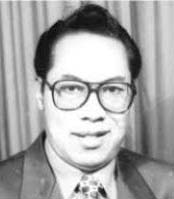
Key Contributions:
- Reforming Administration: E.K. Mawlong brought in reforms to make the state’s administration more efficient and responsive, aiming to meet the needs of the people better and make governance smoother.
- Boosting Infrastructure: He spotlighted improving infrastructure, especially in rural areas, to connect people better, enhance healthcare, and improve education. This effort was all about reducing gaps and ensuring fair development for everyone.
- Improving Social Welfare: Mawlong started programs to help those in need, aiming to better their living conditions, education, and access to healthcare.
- Driving Economic Growth: He zeroed in on economic projects to boost growth, with a keen eye on agriculture and tourism as critical areas that could help the state’s Economy and create jobs.
Challenges:
- Handling Diversity: E.K. Mawlong tackled the tough job of leading a state filled with diverse ethnic groups, all with their own cultures and goals. He aimed for a fair and inclusive way to develop and govern.
- Boosting the Economy Responsibly: Speeding up economic growth without harming the environment was a big challenge, especially in environmentally sensitive Meghalaya, which calls for careful development practices.
- Keeping Politics Stable: Dealing with the tricky dynamics of coalition politics and keeping the government stable in a divided legislature made governing and putting policies into action challenging.
Legacy: S.C. Marak’s tenure as Chief Minister shines for his dedication to boosting stability, growth, and welfare in Meghalaya. He enhanced government operations, upgraded infrastructure, and launched more social welfare programs despite significant political, social, and economic challenges. By leading Meghalaya through a critical period, Marak established a robust foundation for the state’s continuous development, adeptly balancing advancement with the preservation of its natural environment.
Flinder Anderson Khonglam (2001-2003)
Flinder Anderson Khonglam’s time as Chief Minister of Meghalaya focused on tackling the state’s urgent problems and guiding it toward growth and stability. The Chief Ministers of Meghalaya Since Independence, he led when Meghalaya faced governance, economic growth, and social harmony issues. Khonglam worked hard to overcome these challenges, prioritizing growth that included everyone and development that could last.
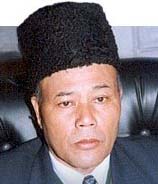
Key Contributions:
- Improving Governance: Khonglam took steps to better Meghalaya’s governance, making changes to ensure the government was more efficient, transparent, and attentive to what people needed.
- Boosting Infrastructure: He also focused on building better infrastructure, especially in rural areas, to enhance transportation, healthcare, education, and water supply, all aimed at raising the standard of living for everyone.
- Economic Growth Strategies: Khonglam introduced policies to kickstart economic growth, highlighting areas like agriculture, horticulture, and tourism for their potential to improve the state’s Economy and create jobs.
- Starting Welfare Programs: Additionally, he launched welfare programs tailored to assist those in need, guaranteeing their access to essential services and support.
Challenges:
- Building Unity Among Diversity: A significant challenge was creating unity and social cohesion in a diverse state, ensuring development plans included everyone and considered all community concerns.
- Promoting Green Growth: The challenge here was to push for growth that doesn’t harm the environment, finding a balance between boosting the Economy and preserving Meghalaya’s beautiful natural surroundings.
- Keeping Politics Stable: Navigating the complex dynamics of coalition politics was vital to keeping the government stable. This stability was crucial for effectively implementing policies and enacting changes.
Legacy: People remember Flinder Anderson Khonglam as a Chief Minister who was deeply committed to enhancing governance, building better infrastructure, and improving the economic situation in Meghalaya, even though he wasn’t in office for long. His push for development that includes everyone and his focus on helping those in need have helped the state move forward. Khonglam’s time in office showed how important it is to grow while also taking care of the environment and ensuring fairness for all, setting the stage for future efforts in Meghalaya.
J. Dringbell Rymbai (2006-2007)
J. Dringwell Rymbai’s time as Chief Minister of Meghalaya stood out for his commitment to tackling the state’s unique challenges and seizing its opportunities. Coming into power during a period of change, Rymbai aimed to bring stability, improve governance, and drive development in the state. His leadership was about ensuring Meghalaya could handle its intricate social and political environment while boosting the Economy and enhancing people’s lives.
Key Contributions:
- Boosting Governance and Stability: Rymbai worked hard to make sure the state’s management and administration were stable and effective. He aimed to strengthen Meghalaya’s institutions and make governance more responsive to the people’s needs.
- Improving Infrastructure: He concentrated on improving Meghalaya’s roads, schools, and healthcare facilities to improve residents’ lives and set the stage for ongoing economic growth.
- Starting Welfare Programs: Rymbai introduced and backed several welfare programs to help those in need, with a particular focus on health, education, and social security, to raise living standards throughout the state.
- Driving Economic Growth: Additionally, he launched initiatives to stimulate the state’s Economy, focusing on agriculture, tourism, and mining to create jobs and generate income, all while keeping an eye on protecting the environment.
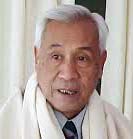
Challenges:
- Building Unity in Diversity: Handling Meghalaya’s diverse mix of ethnic and social groups was a big challenge. Rymbai had to work hard to bring unity and harmony to the state’s different communities.
- Promoting Green Growth: Balancing economic growth with environmental protection was difficult, especially considering Meghalaya’s rich biodiversity. Preserving its natural treasures for future generations was seen as critically important.
- Dealing with Political Complexity: The state’s complicated political scene, including the challenges of coalition politics, made it hard for Rymbai to put long-term development plans and policies into action.
Legacy: People remember J. Dringwell Rymbai as a Chief Minister deeply dedicated to improving governance, enhancing infrastructure, and boosting social welfare. Despite his short time in office, his leadership significantly laid the groundwork for Meghalaya’s growth, emphasizing inclusivity and sustainable development. Rymbai addressed the state’s immediate challenges and strategically planned for its future growth and stability, leaving a lasting mark on Meghalaya’s development journey.
Donkupar Roy (2008-2009)
Donkupar Roy’s time as Chief Minister of Meghalaya stood out for his dedication to tackling the state’s development and governance issues. He stepped into the role during political uncertainty, aiming to establish stable and efficient management, boost the Economy, and improve the well-being of Meghalaya’s varied communities. Throughout his term, he launched efforts to drive development, bring people together, and increase prosperity in the state.
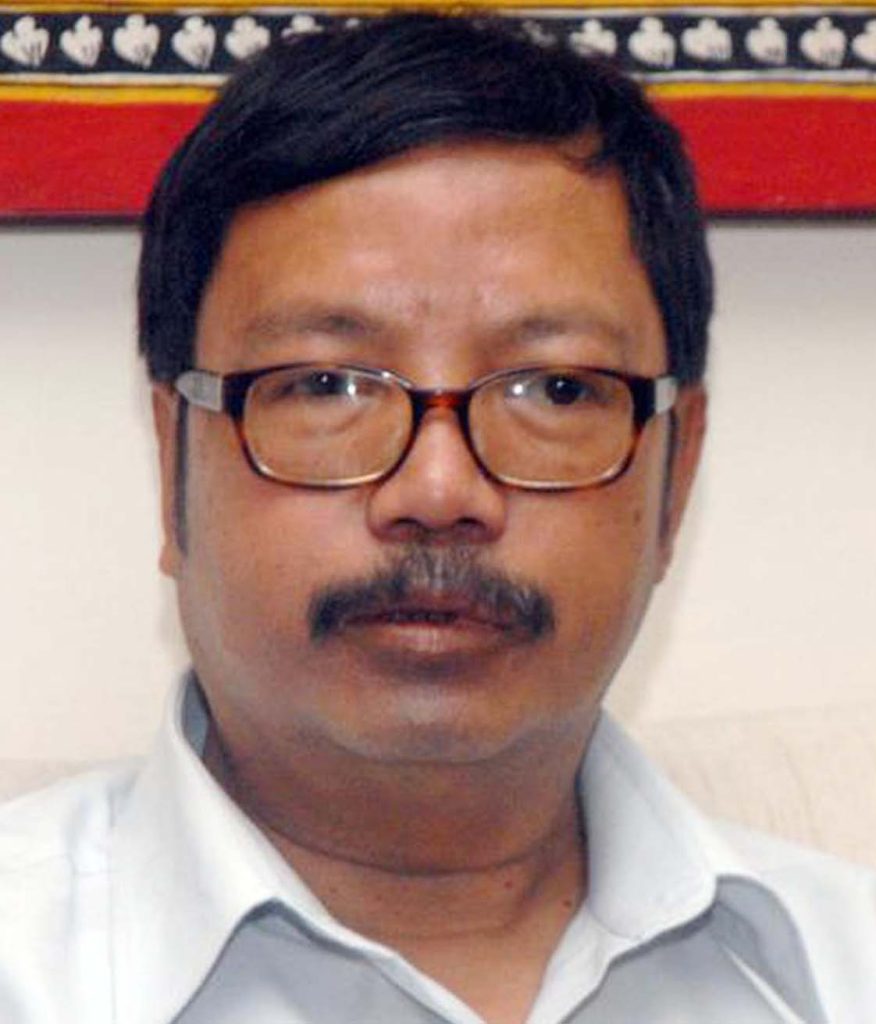
Key Contributions:
- Improving Governance and Policies: Roy focused on enhancing governance by starting policy changes to make the state’s administration more efficient and open.
- Boosting Infrastructure: He prioritised building essential infrastructure like roads, hospitals, and schools to help the Economy grow and make life better for the people of Meghalaya.
- Expanding the Economy: Roy also worked on broadening the state’s Economy by boosting areas such as tourism, farming, and tech, understanding their potential to create jobs and spur economic growth.
- Starting Welfare Programs: In addition, he introduced programs aimed at improving healthcare, education, and social security, especially for those less fortunate, to lessen inequality and encourage fairness in society.
Challenges:
- Keeping Politics Stable: During Roy’s time, dealing with the complexities of coalition politics and keeping things stable in a divided legislature was a big challenge.
- Balancing Growth with Nature: Finding the right balance between pushing for economic growth and protecting Meghalaya’s beautiful natural environment was crucial, especially with the state’s risk of environmental harm.
- Ensuring Unity Among Diverse Groups: Roy skillfully balanced the aspirations of the state’s diverse ethnic and tribal groups, maintaining unity among them. His thoughtful and inclusive leadership was crucial to preventing conflicts and ensuring equitable development for everyone.
Legacy: Donkupar Roy’s tenure as Chief Minister stands out for his dedication to improving governance, enhancing infrastructure, and fostering economic and social welfare in Meghalaya. Despite political, economic, and social challenges, he established a solid foundation for the state’s future development. Roy’s leadership underscored the importance of sustainable and inclusive growth, significantly influencing Meghalaya’s progress towards these goals.
Mukul Sangma (2010-2013, 2013-2018)
Mukul Sangma’s time as Chief Minister of Meghalaya shone with his drive to lead the state to growth that includes everyone and development that lasts. Guiding Meghalaya through significant changes, Sangma tackled the state’s social and economic issues, worked on making politics more stable, and pushed for better governance. His leadership covered a critical development period in Meghalaya, focusing on updating the state’s Economy, boosting social welfare, and upgrading infrastructure.
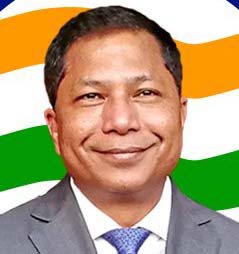
Key Contributions:
- Improving Governance: Sangma rolled out reforms to streamline the state government, making it work better, more openly, and more in tune with what the people need.
- Building Better Infrastructure: He concentrated on constructing and upgrading roads, bridges, schools, and hospitals to stimulate economic growth and improve living standards in Meghalaya.
- Boosting the Economy: Sangma also worked on making the Economy more varied by supporting the tourism, farming, and mining industries, all while keeping an eye on protecting the environment and creating jobs.
- Enhancing Social Welfare: In addition, he introduced several programs to better healthcare, education, and general welfare, especially for those less fortunate and in marginalized communities.
Challenges:
- Growing the Economy While Protecting the Environment: Finding a way to grow Meghalaya’s Economy without harming its beautiful natural surroundings was a big challenge that needed creative and lasting solutions.
- Keeping Peace Among Diverse Groups: During Sangma’s time, handling the state’s ethnic diversity and tensions while promoting peace and ensuring everyone felt included was a crucial part of leading the state.
- Maintaining Political Stability: Making sure politics stayed stable, especially with the challenges of coalition politics, was essential for implementing development plans and reforms.
Legacy: People remember Mukul Sangma’s tenure as Chief Minister for his dedication to Meghalaya’s development, efforts to modernize the Economy, and emphasis on social welfare. Despite numerous challenges, his leadership led to significant improvements in infrastructure, economic diversification, and enhancements in healthcare and education. Sangma’s leadership has left a durable mark on Meghalaya, guiding it towards becoming a more developed, inclusive, and sustainable state.
Conrad Sangma (2018-2023, 2023-Present)
During a period when Meghalaya urgently needed significant changes in its politics, Economy, and society, Conrad Sangma stepped in as the Chief Minister. He’s all about leading Meghalaya toward sustainable growth, new technology, and better governance. Coming from a family known for its solid political background, Conrad Sangma has brought new ideas and solutions to tackle the state’s challenges and seize its opportunities.

Key Contributions:
- Improving Governance with Technology: Conrad Sangma brought in reforms and new tech to make the government more open, efficient and focused on the people. He worked on bringing government services online and making it easier to do business.
- Building Better Infrastructure and Supporting Rural Areas: He committed substantial efforts to improving infrastructure, mainly focusing on rural areas to ensure access to clean water, electricity, and better connectivity for all. This focus aimed to bridge the gap between urban and rural lifestyles.
- Boosting the Economy and Supporting New Businesses: Sangma encouraged a varied economy by backing new businesses, tourism, farming, and eco-friendly mining. He launched efforts to draw in investments and strengthen local markets.
- Enhancing Education and Healthcare: He also made education and healthcare better by updating facilities, starting programs to improve quality, and making sure these services are accessible to everyone.
Challenges:
- Balancing Growth with Nature: Finding the right balance between growing the Economy and protecting Meghalaya’s wide variety of plants, animals, and natural resources was a big challenge.
- Keeping Peace Among Diverse Groups: Making sure Meghalaya’s many different ethnic groups lived together peacefully, considering their different hopes and worries, was always important.
- Handling the COVID-19 Pandemic: The sudden and severe problems brought by the COVID-19 pandemic called for robust crisis handling, healthcare actions, and plans to get the Economy back on track.
Legacy: Conrad Sangma’s time in office stands out for his modern approach to leading, using new technology to improve government, focusing on sustainable growth, and making life better for Meghalaya’s people. His leadership has been solid during the COVID-19 pandemic, prioritizing health and moving the Economy again. As he keeps serving, his goal to make Meghalaya more tech-savvy, economically varied, and welcoming to everyone is shaping his legacy. In addition, He commits to improving the state’s existing strengths and addressing its challenges to benefit future generations.
Conclusion:
The story of Meghalaya, led by its Chief Ministers, showcases their commitment and big plans for the state’s growth. So every Chief Minister has made their mark, tackling challenges and making the most of this stunning state. As Meghalaya keeps changing, the work of its past leaders lights the way to an exciting future, mixing old traditions with new ideas and keeping development eco-friendly.
On Postswirl blogging site, take a closer look at their achievements on Chief Ministers of Meghalaya Since Independence: the hurdles they faced and the difference they have made in bringing the state forward.




